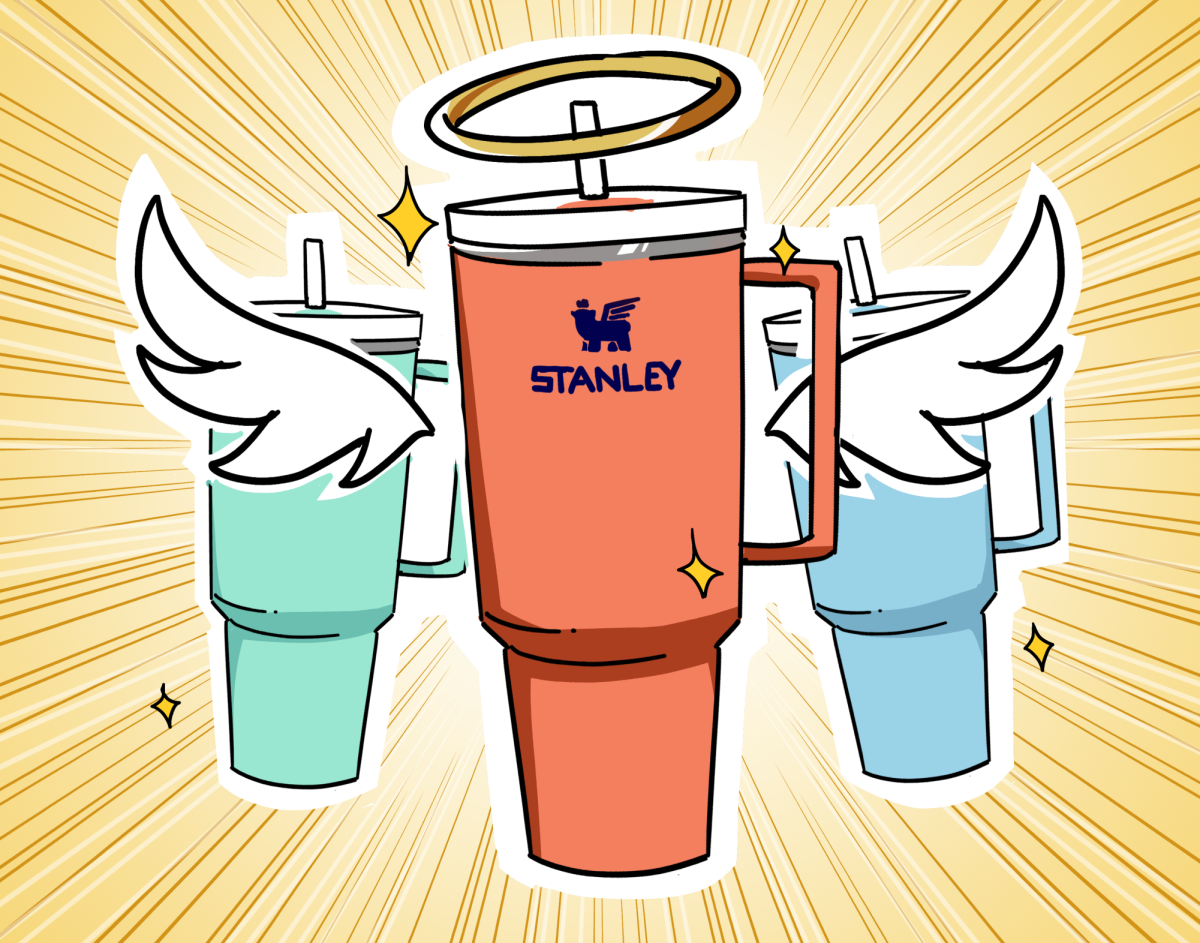The rebirth of possessions, as well as festivity, become necessary in the progression of humanity, overconsumption, and the pursuit of happiness. But, possession may never be fully yoked in our buying-culture, in the bondage between humankind and its fatigued wallet.
We are entering, now, into a state of unprecedented material abundance. And the more we shop, the more that is produced. This is the pop culture remedy, the fantasy of investing worth in worthless things, faking “wanting,” as it is seen in pop culture.
Every season, the collective will propagate an item, a color, a political ideology and trend it. We will obscure a commodity until the very last infant is changed by it. I sat down with Mathew Isaac, chair of the marketing department, and April Atwood, associate marketing professor with a specialization in sustainability, and talked of the newest, laughable fixation: the Stanley cup.
HM: The company has increased nearly 700 million dollars in revenue, just over the past few years, and originally it was a company tethered towards male workers and now it’s a female craze. Can you talk about who this commodity, now, specifically targets or why you think the product has gained so much popularity and profit?
AA: Evidently, it’s women who are strongly influenced by [the] media and are certainly the emphasis consumer [of the Stanley]. The company only used to make the cup in green, and once they determined there are other reasons to purchase the Stanley, using it like a fashion item, which is how many women are treating it, they’ve come out with so many other colors, [tagging them as] limited edition, which is really just a way of unreasonably boosting the interest of the product.
MI: There’s something about the Stanley being part of a collection that tricks consumers into buying more than one product, and the idea of completing something is appealing to most people. But the limited edition has this other element of scarcity, and, if a brand suggests that its product won’t always be available, that increases consumer demand.
HM: Do you think price plays a role in the popularity of a product?
AA: In the case of limited-edition products, the price goes up because of demand. The demand for the product exceeds the quantity the company made and the consumers value the product at a level higher than the company initially charged. When we move into the secondary market, we can see the Stanley cup [already ridiculously priced] being resold for double or more the initial cost. Price just reflects the value of that product [in relation to how we’ve popularized it].
HM: What makes consumers keep buying even if it’s detrimental to their financial liberty?
MI: That’s very socially driven, this sort of herd-mentality, which is especially true in young consumers. It’s a huge driver of why people make sub-optimal financial decisions. In the case of the Stanley, there’s a lure in it being a quality product that allows purchasers to justify buying it, what they don’t realize is that you’re buying another one next week. There’s a thrill, too, one gets from the act of acquisition. When you buy something new, it provides some emotional short-term lift.
HM: That sense of novelty is addicting and when you possess something so incredibly hyped, the consumer hopes it rubs off on them.
AA: Exactly. Consumers rely on products to boost their social standing, to be noticed. What’s ironic about a FAD is you’re not standing out, you’re following the crowd.
Do trends, then, diminish individualism? I asked Shay Damany, a third-year strategic communications major, about the relationship consumers have with one another.
SD: We have made it so that the trends we purchase show which category of people we belong to. People want to be part of an in-group. We match aesthetics in a low-effort way of communicating my alikeness to you. But, trends don’t last forever, and when they die, you just rename the in-group. It’s like when people buy Stanley cups when they already own a hydro flask. The purpose of trendsetting, of this in-group/out-group, is to uphold capitalism and consumerism while identifying yourself to the rest of the world.
The abundance of festivity, marked by good or bad feeling, and the need to fulfill temporal happiness, prolongs the purchase history. So that, as humankind keeps working, we will never stop buying those commodities which go beyond needfulness. Self-sufficiency will grow bored and placid, and the money saved up from stiff labor will be spent in appropriating the present for much less than any real aspirational investment.
We initiate a temporary self-fulfilling commodity, trend it, maximize its value, and end up with more of the same. We will buy and buy and the expectation of happiness will run away from us, will be chased forever.










